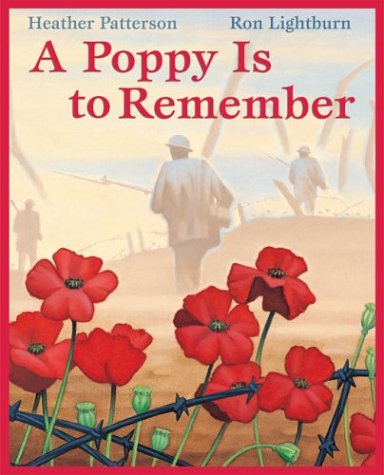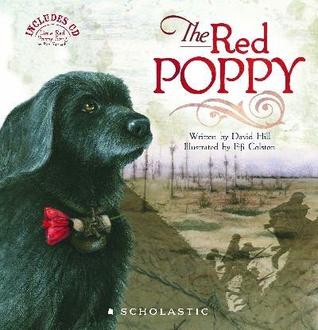On November 11, especially, but also throughout the year, we have the opportunity to remember the efforts of these special Canadians. In remembering, we pay homage to those who respond to their country's needs. On November 11, we pause for two minutes of silent tribute, and we attend commemorative ceremonies in memory of our war dead.
Following the First World War a French woman, Madame E. Guérin, suggested to British Field-Marshall Earl Haig that women and children in devastated areas of France could produce poppies for sale to support wounded Veterans. The first of these poppies were distributed in Canada in November of 1921, and the tradition has continued ever since, both here and in many parts of the world.
Poppies are worn as the symbol of remembrance, a reminder of the blood-red flower that still grows on the former battlefields of France and Belgium. During the terrible bloodshed of the second Battle of Ypres in the spring of 1915, Lieutenant-Colonel John McCrae, a doctor serving with the Royal Canadian Army Medical Corps, wrote of these flowers which lived on among the graves of dead soldiers:
In Flanders Fields the poppies blow
Between the crosses, row on row,
That mark our place; and in the sky
The larks, still bravely singing, fly
Scarce heard amid the guns below.John McCrae
The flowers and the larks serve as reminders of nature's ability to withstand the destructive elements of war by men, a symbol of hope in a period of human despair. In Canada, traditionally the poppies which we wear were made by disabled Veterans. They are reminders of those who died while fighting for peace: we wear them as reminders of the horrors of conflict and the preciousness of the peace they fought hard to achieve.Between the crosses, row on row,
That mark our place; and in the sky
The larks, still bravely singing, fly
Scarce heard amid the guns below.John McCrae
(source: How Do We Remember, Veterans Affairs Canada)
 A Poppy is to Remember by Heather Patterson
A Poppy is to Remember by Heather PattersonThis book helps to explain Remembrance Day and the importance of remembering and paying tribute to Canadian soldiers past and present. Includes a history of the poppy as a symbol of remembrance and of how to use poppies. The poem, In Flanders Field, is included.
 The Red Poppy by David Hall
The Red Poppy by David HallNipper is a messenger dog during World War I, carrying valuable information between the trenches and the battlefield. Along with Nipper, the story shows 2 enemy soldiers and their realization that uniforms and lines on a map can not erase the humanity between the two men. As they struggle to survive, they share stories, help one another and offer each other hope until they decide to rely on Nipper to escape their perilous situation.
Moina Belle Michael, a college professor from Georgia, first pinned poppies to soldier’s uniforms after reading the poem In Flanders Fields. She wanted to honor the soldiers and those who had died. Moina had been training to become a YMCA canteen worker at Columbia University’s Y headquarters to help World War I soldiers overseas. But when she completed training, she was then told she was too old to go.
So, she stayed behind doing what she can when she got the idea to establish the Flanders Field Memorial Poppy as a universal symbol of tribute and support for veterans and their families during World War I and II. Known as the Poppy Lady, Michael dedicated her life to servicemen and women, buying and placing fresh flowers in rooms where they would gather before heading overseas.

The carefree childhood for Ben and his best friend Ray becomes a distant memory when they join the army to serve their country. But, in the midst of battle can their friendship survive? Published to mark the centenary of the start of the First World War and in homage to the war poets Where The Poppies Now Grow, written in rhyme with powerful illustrations, is a touching tribute to honour all those who sacrificed so much for peace.

Thank you very much for mentioning my book, "The Poppy Lady." Yesterday I had the pleasure of meeting with students in a nearby elementary school. It warmed my heart to hear how much they appreciate the service and sacrifice of Veterans.
ReplyDelete